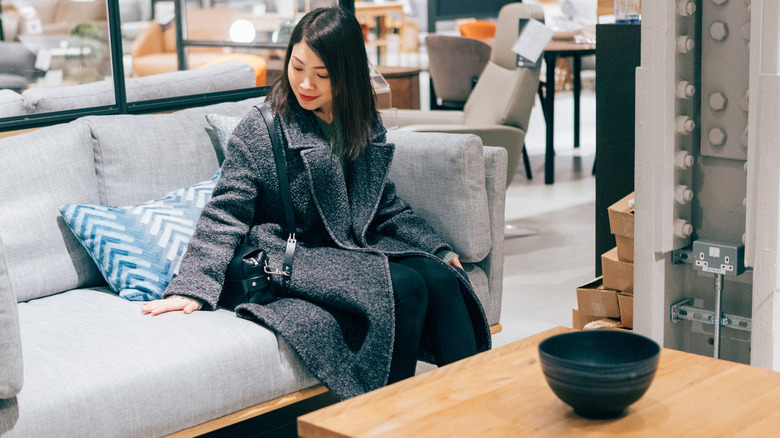The Clutter-Causing Practice That Quietly Plagues Your Home (& How To Combat It)
Clutter. It gets underfoot, collects dust, ruins the sight lines of your rooms, and adds nothing to your décor. But to be blunt, clutter is kind of our own fault. Unless we have a generous fairy godmother constantly gifting us household paraphernalia, we're the ones who go out and buy up the items we schlep home to put somewhere. We're the ones going online to find the right systems of cabinets and storage bins dedicated to maintaining and controlling clutter. Which, at the end of the day just leaves us with well-organized clutter rather than using strategies to actually declutter our homes.
Maybe the problem isn't the inability to tame the clutter with a system. Maybe the problem starts with not understanding the effect that acquiring a new item can have. When it comes to running a household and choosing home décor, there is a sneaky human tendency that can silently cause people to buy far more stuff than originally intended. It's called the Diderot Effect. Just knowing about it is the first step in gaining control of it, and then you can take steps to reduce the items that clutter up your home.
How the Diderot Effect can cause clutter
The effect is named after Denis Diderot, an 18th-century French philosopher and writer. Diderot, who was never wealthy, acquired an expensive new dressing gown (a fancy robe to wear indoors) from a friend. Having such a beautiful robe compelled Diderot to source more fine possessions to match it, so he spent wildly on better furniture, new art, and more.
Anthropologists named this phenomenon after Diderot to examine consumer spending. Today the Diderot Effect is defined as someone's budget spiraling out of control after obtaining a new item. Put another way, it's a chain reaction of buying something followed by purchasing additional, sometimes superfluous things to go along with the original item.
When it comes to your house, you may need a new sofa. But once that's in place, the end tables look outdated. Then you may feel like you need to upgrade your accent chairs and area rug, seeing how easy it is to go down this rabbit hole. Or you go to search for a new sofa, but at the store, the display of throw pillows at the neighboring display are so appealing. Then, as you walk through the store, you get tempted by that fun sculpture or unique lamp. Soon, you may have blown your original budget and purchased way more items than you needed.
How to combat this clutter-causing practice
To counter this effect you have to get tough, with a particular goal and a clear plan in mind. Let's say the objective is a new bed. The first line of defense is to become aware of any desire for accompanying items like bedding, nightstands, and lamps. Watch yourself looking at things that are not number one on the list. If the old sheets are in tatters, okay, but make a list and set a budget. If the only thing wrong with the other bedroom furniture is that it's not new like the bed, analyze the situation before you overspend. Can you deep clean or repaint the nightstands? Could your current lamps simply be revamped with new shades?
Another way you can preempt the Diderot Effect is by making sure any new items you get match the existing pieces in the space. You can also try the one-in-one-out rule. For every item you purchase, like home decor or kitchen gadgets, you sell or donate one that you already own. Leverage it as part of the organizational triangle method, and you'll start combating clutter like pro.
Also, keep in mind that living clutter-free is a mindset that's not exclusive to any one style. You can have a home decorated in mid-century modern, coastal, or traditional and still apply the principles of minimalism to control clutter. If you'd like to start marshalling your stuff, here's a cheat sheet of 10 common items to get rid of in order to declutter your home.


